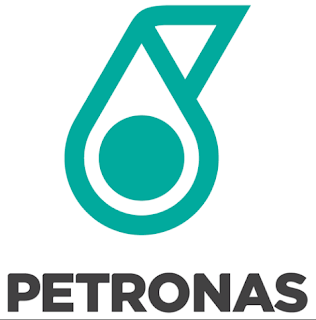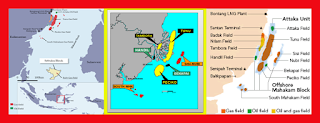The golden age of the global gas industry is predicted to arrive soon after the shift of unfriendly fuel consumption, such as crude oil and coal, to natural gas. Indonesia also will have to strengthen the natural gas infrastructure to seize opportunities. Based on projections, North America, especially the United States (US), will become the leader of world gas producers with abundant production.
"The use of electric vehicles in the world will also change the world's energy market as more and more power plants use gas," said Sasaka Peace Foundation Chairman Nobuo Tanaka as moderator of the discussion on What's Next for The Asia Pacific Gas Market in the World Gas Conference (WGC) 2018, in Washington DC, Wednesday (27/6).
WGC is a 3-year event organized by a country that holds leadership in the International Gas Union. The WCC was attended by influential energy leaders, executive officers of the global energy giant, such as Exxon Mobil Corp., BP Plc., Total, senior officials from the US Department of State and energy bureau, and a number of energy ministers from oil and gas producers and consumers such as Argentina and Indonesia .
Tanaka, who is also a former Executive Director of the International Energy Agency (IEA), added that China would also switch to greener energy, which is gas, and reduce the use of coal as a source of energy. Predictions on the gas market in China are also corroborated by Chairman of Board of Director of Beijing Gas Group Li Yalan.
He said gas consumption in the country will increase significantly driven by the increase of pipelines, and 70,000 km to 100,000 km by 2020. In addition, China has 18 Liquified Natural Gas (LNG) terminals with capacity of 60 million cubic meters per year.
"With expansion and development, the 18 terminals will have a capacity of 80 million tons by 2020," he said.
Growing gas consumption is in line with China's move to reduce coal consumption for power generation. For example, a large-scale power plant that requires 35 million tons of coal per year to be only one-fourth or five million tons. Last year, the IEA has predicted the use of natural gas will surpass coal in 2030 as the world's second largest energy source. By 2040, gas consumption is expected to equal the use of oil as the largest source of energy.
Currently, the position of natural gas as an energy source is in the third position with a percentage of 23.3%. The natural gas position is under 27% coal, and oil is 34%. In the long term, the IEA says the global gas market will face challenges and cost advantages in emerging markets.
On the other hand, trade disputes between the United States and China can disrupt the global energy market in the short term. Beijing this month filed a counter-rate for petroleum and US imports. It is expected to hit the US oil and gas industry. Chevron CEO Mike Wirth fears the trade tension could hit demand for energy commodities.
"The risk of a trade war begins to weigh on people's perceptions of economic growth," Reuters quoted him as saying.
INDONESIA OPPORTUNITY
Discussion of the Asia Pacific gas market in the WGC event also featured ESDM Minister Ignatius Jonan as the keynote speaker. The other panelists, among them EVP 81 Upstream CEO Petronas Anuar Taib and Li Yalan. In his presentation, Jonan predicts that the use of gas as a primary energy source is increasing. In Indonesia, the increase in gas consumption is predicted to reach 6% -7% per year, or above economic growth.
However, he is optimistic that Indonesia should not become a future gas importer following the discovery of new gas wells such as in the deep sea in Makassar Strait and Masela Block in Maluku. The two new gas sources will break the IEA's prediction that Indonesia will become a net importer of gas by 2040. Masela will produce 1.2 million cubic feet of gas per day and IDD 1,000 cubic feet per day. Jonan said that when answering Tanaka's question.
"The IEA Prediction is not wrong. However, the prediction was made before the discovery of gas Masela, Maluku, and Makassar Strait, "said Jonan.
In the Masela Block, Inpex and Shell act as operators and are expected to start production by 2027. As for the IDD project is operated by Chevron. In data from SKK Migas, IDD Gendalo and Gehem Project managed by Chevron Makassar Ltd. will start operating (on stream) in 2024 and 2025. IDD Gendalo is estimated to have production of about 500 million cubic feet per day, while Gehem amounts to 420 million cubic feet per day.
Nicke Widyawati, Ignatius Jonan, and Neil Chapman
With a daily gas production of 1.2 million barrels of oil equivalent, only 60% is used for domestic consumption. Plt. President Director of PT Pertamina Nicke Widyawati assess infrastructure development as the main requirement for the development of natural gas as one of the main energy besides oil and coal. Later, the infrastructure is needed to naturally populate the local liquefied natural gas.
Nicke Widyawati
"Infrastructure needed, among others, LNG terminals and gas pipelines. It could make domestic gas prices more competitive, "Nicke said.
Nicke said Pertamina will further explore the gas business from infrastructure such as LNG and gas pipeline. Holding BUMN Migas also became a supporter of the company's growth to strengthen the gas infrastructure.
"The gas infrastructure should be reinforced by industrial development plans. PGN [PT Perusahaan Gas Negara Tbk.] And PT Pertamina Gas will develop infrastructure to bring gas sources closer to consumers, "he said.
According to Nicke, the distance between gas sources and closer consumers could push down the price of gas more competitive. In the future, Nick said the company coordinates with major gas consumers such as PT Perusahaan Listrik Negara.
"Joint planning is done in order to be clear what to support."
IN INDONESIA
Siap-Siap Boaming Gas
Masa emas industri gas dunia diprediksi segera tiba setelah beralihnya konsumsi bahan bakar tidak ramah lingkungan, seperti minyak mentah dan batu bara, ke gas alam. Indonesia pun mau tidak mau harus memperkuat infrastruktur gas bumi untuk meraih peluang. Berdasarkan proyeksi, Amerika Utara, terutama Amerika Serikat (AS), akan menjadi pemimpin produsen gas dunia dengan produksi yang melimpah.
“Penggunaan kendaraan listrik di dunia juga akan mengubah pasar energi dunia karena makin banyak pembangkit listrik menggunakan gas,” kata Chairman The Sasaka Peace Foundation Nobuo Tanaka saat menjadi moderator diskusi bertema What Next for The Asia Pacific Gas Market di arena World Gas Conference (WGC) 2018, di Washington DC, Rabu (27/6).
WGC merupakan kegiatan 3 tahunan yang diselenggarakan oleh negara yang memegang kepemimpinan dalam International Gas Union. WCC dihadiri oleh pemimpin berpengaruh bidang energi, pejabat eksekutif raksasa energi global, seperti Exxon Mobil Corp., BP Plc., Total, pejabat senior dari Departemen Luar Negeri AS dan biro energi, serta sejumlah menteri energi dari produsen dan konsumen migas seperti Argentina dan Indonesia.
Tanaka yang juga mantan Direktur Eksekutif Intemational Energy Agency (IEA) menambahkan China juga akan beralih ke energi yang lebih hijau, yaitu gas, dan mengurangi pemakaian batu bara sebagai sumber energi. Prediksi atas pasar gas di China juga dikuatkan oleh Chairman of Board of Director Beijing Gas Group Li Yalan.
Dia mengatakan konsumsi gas di negara itu akan meningkat signifikan didorong oleh bertambahnya jaringan pipa, dan 70.000 km menjadi 100.000 km pada 2020. Selain itu, China memiliki 18 Terminal liquified natural gas (LNG) dengan kapasitas 60 juta meter kubik per tahun.
“Dengan ekspansi dan pengembangan, 18 terminal itu akan memiliki kapasitas 80 juta ton pada 2020,” tuturnya.
Konsumsi gas yang terus meningkat itu sejalan dengan langkah China mengurangi konsumsi batu bara untuk pembangkit listrik. Misalnya, satu PLTU skala besar yang memerlukan batu bara 35 juta ton per tahun menjadi hanya sepertujuhnya atau 5 juta ton. Tahun lalu, IEA telah memprediksi penggunaan gas alam akan melampaui batu bara pada 2030 sebagai sumber energi kedua terbesar di dunia. Pada 2040, konsumsi gas diperkirakan menyamai penggunaan minyak sebagai sumber energi terbesar.
Saat ini, posisi gas bumi sebagai sumber energi berada di posisi ketiga dengan persentase 23,3%. Posisi gas bumi berada di bawah batu bara 27%, dan minyak sebesar 34%. Secara jangka panjang, IEA menyatakan pasar gas global akan menghadapi tantangan dan persajngan biaya di pasar negara berkembang.
Di sisi Iain, perselisihan dagang antara Amerika Serikat dan China dapat menggangu pasar energi global dalam jangka pendek. Beijing pada bulan ini mengajukan tarif balasan untuk impor petroleum dan AS. Hal itu diperkirakan dapat memukul industri migas AS. CEO Chevron Mike Wirth khawatir tensi perdagangan dapat memukul permintaan komoditas energi.
“Risiko perang dagang mulai membebani persepsi orang terhadap pertumbuhan ekonomi,” seperti dikutip Reuters.
PELUANG INDONESIA
Diskusi pasar gas Asia Pasifik dalam ajang WGC juga menampilkan Menteri ESDM Ignasius Jonan sebagai pembicara utama. Adapun panelis lainnya, di antaranya EVP 81 CEO Upstream Petronas Anuar Taib dan Li Yalan. Dalam paparannya, Jonan memprediksi bahwa penggunaan gas sebagai sumber energi primer semakin meningkat. Di Indonesia, peningkatan konsumsi gas diprediksi mencapai 6%-7% per tahun, atau di atas pertumbuhan ekonomi.
Namun, dia optimistis Indonesia tidak harus menjadi importir gas pada masa depan menyusul ditemukannya sumur gas baru seperti di laut dalam Selat Makassar dan Blok Masela di Maluku. Dua sumber gas baru tersebut akan mematahkan prediksi IEA bahwa Indonesia akan menjadi net importir gas pada 2040. Masela akan memproduksi gas 1,2 juta kaki kubik per hari dan IDD 1.000 kaki kubik per per hari. Jonan menyatakan hal itu saat menjawab pertanyaan Tanaka.
“Prediksi IEA tidak salah. Akan tetapi, prediksi itu dibuat sebelum penemuan gas Masela, Maluku, dan Selat Makassar,” kata Jonan.
Pada Blok Masela, Inpex dan Shell bertindak sebagai operator dan diperkirakan akan memulai produksi pada 2027. Adapun, proyek IDD dioperasikan oleh Chevron. Dalam data SKK Migas, Proyek IDD Gendalo dan Gehem yang dikelola oleh Chevron Makassar Ltd. akan mulai beroperasi (on stream) pada 2024 dan 2025. IDD Gendalo diperkirakan memiliki produksi sekitar 500 juta kaki kubik per hari, sedangkan Gehem sebesar 420 juta kaki kubik per hari.
Dengan produksi gas harian 1,2 juta barrel setara minyak, hanya 60% yang digunakan untuk konsumsi domestik. Plt. Direktur Utama PT Pertamina Nicke Widyawati menilai pembangunan infrastruktur menjadi syarat utama untuk pengembangan gas bumi sebagai salah satu energi utama selain minyak dan batu bara. Nantinya, infrastruktur itu diperlukan untuk mengutilisasi gas alam cair lokal secara maksimal.
“Infrastruktur yang dibutuhkan antara lain, terminal LNG dan pipa gas. Hal itu bisa membuat harga gas domestik menjadi Iebih kompetitif,” Kata Nicke.
Nicke mengatakan Pertamina akan semakin mendalami bisnis gas dari sisi infrastruktur seperti LNG dan gas pipa. Holding BUMN Migas pun menjadi pendukung pertumbuhan perseroan untuk memperkuat infrastruktur gas.
“lnfrastruktur gas memang harus diperkuat dengan rencana pengembangan industri. PGN [PT Perusahaan Gas Negara Tbk.] dan PT Pertamina Gas bakal mengembangkan infrastruktur agar mendekatkan sumber gas dengan konsumen,” ujarnya.
Menurut Nicke, jarak antara sumber gas dengan konsumen yang semakin dekat bisa menekan harga jual gas Iebih kompetitif. Pada masa mendatang, Nickemengatakan perseroan menjalin koordinasi dengan konsumen gas utama seperti PT Perusahaan Listrik Negara.
“Joint planning dilakukan agar jelas apa yang harus didukung.”
Bisnis Indonesia, Page-1, Friday, June 29, 2018






















